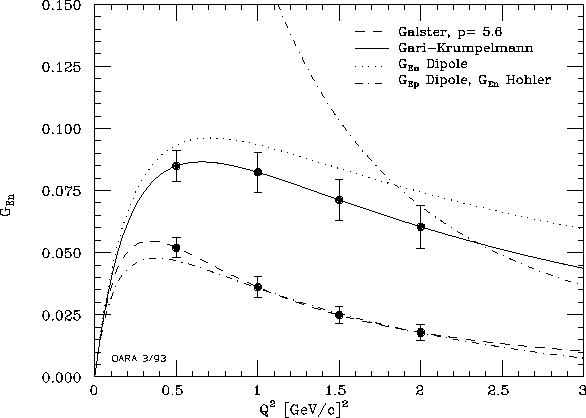![]()
The additional factors in R are:
Table 13 gives the number of counts, rates and times for each Q ![]() ; the rates
have been calculated after averaging over the detector acceptances.
; the rates
have been calculated after averaging over the detector acceptances.
In Figure 13 we show the resulting error bars we expect. They have been calculated for two assumptions on the behaviour of G, the Galster and Gari-Krumpelman parametrizations.

Figure 12: Expected data for G as a function of Q ![]() , calculated for two
parametrizations.
, calculated for two
parametrizations.
In addition, we plan to take measurements on NH ![]() targets, to measure the dilution
factor and to correct for backgrounds and systematic effects.
The measurements on a nitrogen target will be used to extract the backgrounds from the
total quasielastic peaks, determining in this way the ratio
targets, to measure the dilution
factor and to correct for backgrounds and systematic effects.
The measurements on a nitrogen target will be used to extract the backgrounds from the
total quasielastic peaks, determining in this way the ratio ![]() discussed earlier, in a model independent way.
discussed earlier, in a model independent way.
Considerable time will be spent in beam polarization studies. The disruptive Möller scattering technique does not allow data taking during polarization monitoring. To determine the beam polarization to 3% over long periods will require many short measurements.
An additional entry details the contingency we add to allow for unforeseen difficulties, additional calibrations, etc.